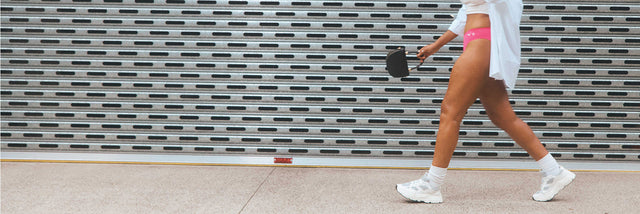Any new mum will tell you that having a baby has the ability to change your body quite dramatically. While it’s easy to spot the external changes (like your belly stretching out and your feet swelling up), internal changes can be a little trickier to track - with many mums ignoring their postpartum pelvic floor.
During labour and birth your pelvic floor has to stretch to allow for your baby’s head to pass out of your uterus and through your vagina. As this is quite a mammoth invasion to that area, childbirth can leave you with serious bruising, swelling and soreness. This situation is only worsened if the stretching of your pelvic floor muscles have also stretched the nerves connected to it - leaving you with numbness down there.
Many doctors will recommend that you kick start your pelvic floor exercises again after giving birth to help you heal quickly and guard against accidental urine leaks.
Sarah is a Pelvic Floor and Continence Physiotherapist based out of the Gold Coast in Queensland. She has extensive knowledge in a wide range of areas including pregnancy, postnatal, pelvic floor dysfunction, urinary and faecal incontinence, sexual pain and musculoskeletal pain. Sarah’s mission is to educate and empower women of all ages to understand what is normal and what isn’t when it comes to their pelvic floor.

What is Pelvic Floor Dysfunction?
Pelvic Floor Dysfunction is a very broad term used for a number of conditions. This can be urinary and/or faecal incontinence, pelvic organ prolapse, constipation, incomplete bladder or bowel emptying, urinary frequency and urgency, painful sex, pelvic pain, coccyx (tailbone) pain, feeling a bulge or heavy in the vagina or lower back pain.
What causes Pelvic Floor Dysfunction?
The most common cause of Pelvic Floor Dysfunction is pregnancy and in particular having a vaginal birth where there has been an instrumental delivery, long pushing stage, perineal tears greater than stage 2 and a baby over 4kg. Other factors can lead to Pelvic Floor Dysfunction such as pelvic surgery, endometriosis, women who are overweight or obese and people with a lack of awareness of their pelvic floor.
How does Pelvic Floor Dysfunction cause bladder leakage?
Commonly, pelvic floor dysfunction can be caused from weak pelvic floor muscles. The pelvic floor muscles are responsible for controlling the flow of urine, wind and faeces. If these muscles become weak, then the ability to hold in urine decreases. This can occur when you least expect and with a sudden physical event such as a cough, sneeze or jump. This type is called stress urinary incontinence. You can also have urge urinary incontinence which is the involuntary loss of urine associated with an increased urge to urinate.
Can you still fix your bladder leakage if you’re older?
Yes! As Pelvic Floor Physiotherapists, we have the ability to assess each pelvic floor muscle individually and tailor a pelvic floor rehabilitation program specific to your needs. We have a huge amount of good quality research that proves you can cure your urinary incontinence with pelvic floor muscle training. Pelvic floor muscles are just like any other muscle, you have got to use it or you’ll lose it!
What is Pelvic Organ Prolapse?
A prolapse occurs when the internal pelvic organs such as the bladder, bowel, uterus and small intestine, loses its structural support and begins to descend down into the pelvic cavity.
How is Pelvic Floor Dysfunction assessed?
A qualified Pelvic Floor Physiotherapist will take a thorough history about your symptoms, bladder and bowel health, sexual function, medical history and exercise regime. They will then assess your pelvic floor via an internal examination. This is the most accurate way to assess your pelvic floor as you have lots of different internal muscles in the pelvis. An external assessment will also be conducted of the surrounding joints and muscles.
Your thoughts on Modibodi?
I love the Modibodi range, I think it’s so important to give women the opportunity to allow them to take control of their bladder. These garments can give a woman her quality of life back and this can make such a huge impact on her life. I love using these garments in conjunction with a pelvic floor strengthening program.
Juggling both of those and a brand new baby is a lot to deal with, so we have a little something to help you out… All Modibodi underwear comes with built-in absorbency so it has you covered for little leaks and periods (as and when they come). You can have a look at what's on offer here. We also offer a Maternity range that offers support to changing bodies and leaky boobs.
If you want to hear more from Sarah or book a class you can find her here:
Sarah Anderson (DPT, BExSc)
Pelvic Floor Physiotherapist
Instagram: @femalephysioco
Facebook: Female Physio Co.
Website: www.femalephysioco.com
Email: sarah@femalephysioco.com
Clinic: Gold Coast Women’s Health, Broadbeach 2681 Gold Coast Highway, Broadbeach, 4218 QLD.









